Last updated on
Explore these craft blog ideas because they unleash your creativity, enabling you to transform ordinary materials into extraordinary art.
This article includes unique designs that you won’t find anywhere else. We hope you will find them inspiring!
Crafting, a beloved pastime for many, has transformed into a vibrant blogging community where creativity reigns. Today, there is an amazing array of craft blog ideas across the web, many of which we acknowledge and appreciate.
At the end of this article, links to some of the best and well-known ideas for craft blogging will be provided. Despite the abundance of resources already available, the aim of this article is to dive deeper, exploring the uncharted territories of craft blogging.
Drawing fresh and unique ideas with new angles, this article promises a refreshing take on craft blogging. Dip into this treasure trove of originality and find illuminating, helpful ideas for your own craft blog. Let’s get crafting!
Table of Contents
“Promoting Your Craft Blog: SEO Strategies”

Search engine optimization (SEO) plays a crucial role in increasing the visibility of your craft blog. Here are key points to effectively optimize your blog for search engines:
- Keyword Research: Identify popular yet niche keywords related to crafts. Tools like Google Keyword Planner or SEMrush can help. Weave these keywords naturally into your titles, headers, and blog content.
- Quality Content: Create valuable, in-depth content that provides solutions to common crafting questions or problems. High-quality content is more likely to get linked and shared, which can boost your rankings.
- On-Page Optimization: Ensure each post includes a title tag, meta description, and alt tags for images. These elements should contain primary keywords without overstuffing.
- Mobile-Friendly Design: With increasing mobile searches, ensure your blog is responsive and loads quickly on all devices.
- Internal Linking: Link to other posts within your blog to keep readers engaged and reduce bounce rates. This also helps search engines crawl and index your site more effectively.
- Backlinks: Cultivate relationships with other craft bloggers and websites to generate backlinks. Guest posting and collaboration projects are good approaches to gain quality backlinks.
- Regular Updates: Consistently update your blog with fresh content. A regularly updated blog is indexed more often, and fresh content can rank more quickly in search results.
Implementing these strategies can significantly enhance your blog’s SEO performance, attracting more craft enthusiasts to your content.
“Unlocking the Potential of Social Media for Your Craft Blog”

Embrace visual platforms like Instagram and Pinterest where crafts can be showcased through high-quality images and videos. Use these platforms’ features—like stories, live sessions, and carousel posts—to engage followers and exhibit different dimensions of your work.
Leverage hashtags to increase the visibility of your posts. Research popular and relevant hashtags within the crafting community, ensuring you reach a wider, interested audience.
Engage with your followers by responding to comments, asking for their opinions, and encouraging user-generated content, such as asking them to share photos of their own creations based on your tutorials.
Partner with influencers or other craft bloggers to cross-promote content. This can help you tap into new audiences and build valuable relationships within the crafting community.
Post consistently and at optimal times. Analyze when your audience is most active online to maximize engagement.
Utilize social media analytics tools to track the performance of your posts. Understanding which content performs best allows you to tailor your social media strategy to what resonates most with your audience.
Offer exclusive content or previews on social media to create a sense of community and reward followers, encouraging them to engage more deeply with your craft blog.
“Introducing Kids to Crafts: A Blogging Adventure”

Embracing the wonder of crafting with children offers a treasure trove of educational and developmental benefits. As they manipulate materials and see their ideas come to life, kids hone fine motor skills and ignite their imagination. A craft blog can serve as an invaluable resource by providing age-appropriate project ideas that cater to different skill levels.
- Highlight simple projects that require minimal supervision, encouraging independence and decision-making.
- Include crafts that integrate learning objectives, such as counting or color recognition, supporting both creativity and academics.
- Show ways to repurpose household items into craft supplies, fostering resourcefulness and an eco-conscious mindset.
- Document crafting sessions with clear, step-by-step photos making it easier for children (and guardians) to follow along.
- Share personal stories of crafting with kids, creating a sense of connection and community with your readership.
- Offer printable templates or coloring pages on the blog for an interactive element that seamlessly ties into activities.
Each blog entry serves as a guide for parents and educators looking to infuse their interactions with creativity, positioning your blog as a go-to source for crafting adventures that both educate and entertain.
“Upcycling Crafts: Turning Trash Into Treasure”
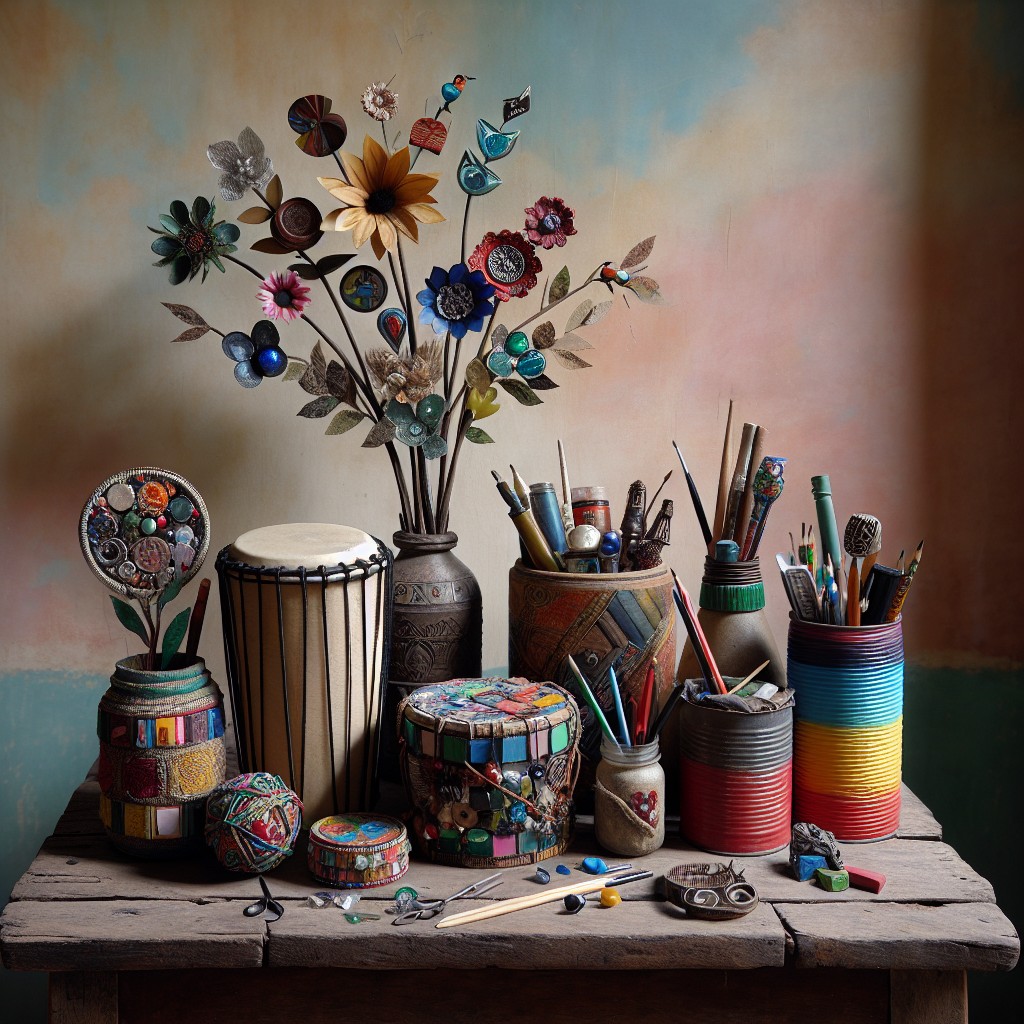
Transforming everyday waste into aesthetic and functional items breathes new life into what might otherwise crowd landfills. Upcycling, the art of repurposing discarded materials, not only taps into creativity but also contributes to sustainability.
A wide array of objects can serve as the foundation for upcycling projects. Here’s how you can get started:
- Choose Your Materials: Start with common household items such as jars, cans, old clothing, and furniture. Look for materials that possess potential for transformation.
- Gather Inspiration: As you curate your ideas, consider the end-use of the item. Pinterest, Instagram, and upcycle-specific blogs are excellent sources for inspiration.
- Plan Your Project: Before diving in, sketch a design or outline the steps you’ll take. This will guide your process and ensure the functional integrity of your final product.
- Assemble Tools: Depending on your project, you may need tools like scissors, paint, glue, or sandpaper. Collect these items ahead of time to streamline your crafting session.
- Get Creative with Techniques: Experiment with painting, decoupage, sewing, or carpentry to transform your chosen item. Each technique can yield vastly different results, so don’t be afraid to try multiple methods.
- Document Your Progress: Taking photos and jotting down notes as you go can create rich content for your blog and help others learn from your process.
Embracing upcycling enhances not only your blog’s content but also encourages an eco-conscious approach that resonates with an increasingly environmentally aware audience.
“Seasonal Craft Ideas for Every Month”

Seasonal crafts capitalize on the natural ebb and flow of the year, allowing you to tap into the current interests and cultural moments of your audience. Here’s how to curate your craft ideas month by month:
- January: Lean into the New Year with calendar-making projects and organizational crafts that help readers start their year afresh.
- February: Focus on Valentine’s Day-themed crafts such as handmade cards and romantic home decor.
- March: Explore springtime crafts, such as floral wreaths and St. Patrick’s Day decorations.
- April: Incorporate Earth Day projects that use recycled materials and teach sustainable crafting practices.
- May: Offer crafts centered around Mother’s Day, like personalized jewelry or photo gifts.
- June: With summer approaching, present outdoor crafts like garden decorations or beach-inspired creations.
- July: Highlight patriotic crafts in line with Independence Day celebrations in the US.
- August: Tap into the back-to-school excitement with DIY organizers and custom school supplies.
- September: As fall sets in, share crafts that feature autumnal themes, such as leaf prints or pumpkin decor.
- October: Gear up for Halloween with costume-making guides and spooky home decorations.
- November: Thanksgiving crafts, such as table centerpieces or gratitude journals, resonate well during this month.
- December: End the year with a variety of winter holiday projects, from homemade gift ideas to festive ornaments and adornments.
By aligning your content with these timely themes, you ensure your craft blog stays relevant and engaging throughout the year.
“Building an Audience: Key Elements of a Successful Craft Blog”
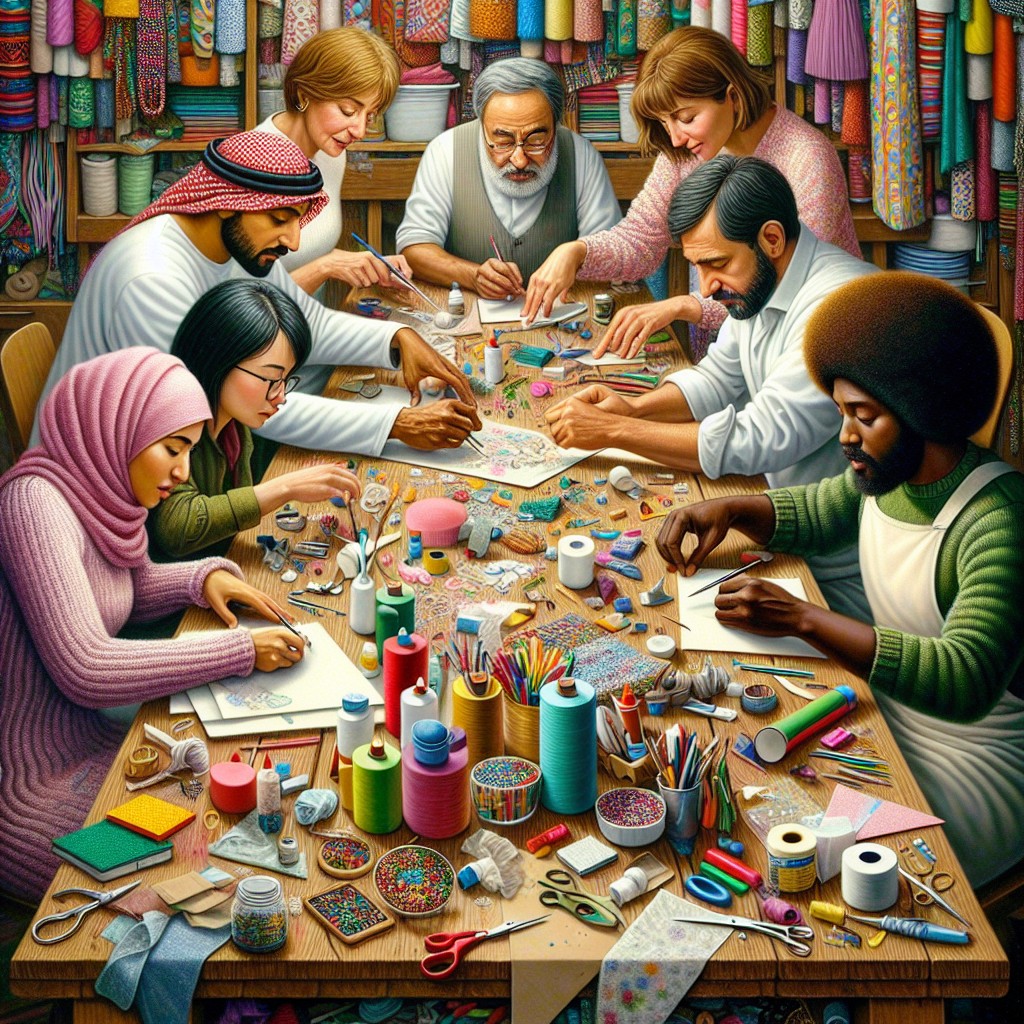
Crafting a personal connection with your readers can significantly enhance engagement. Share stories behind your projects and invite responses to create a dialogue. Your authenticity will foster loyalty among your audience.
Content consistency is paramount. Establish and adhere to a posting schedule to keep readers returning for more. Whether it’s weekly or bi-weekly, consistency keeps your blog fresh and top-of-mind.
Quality visuals are non-negotiable in the craft blogging sphere. High-resolution photos and well-produced videos not only demonstrate your craft more effectively but also make your blog more shareable and visually appealing.
Interactive content, such as polls, contests, and interactive tutorials, increases participation and can quickly spread the word about your blog. It’s an engaging way to keep your readers involved and interested.
Collaborating with other craft bloggers and influencers can expand your reach. Guest posts, joint projects, or interviews can introduce your blog to new audiences and build valuable community ties.
Last but not least, email newsletters with highlights, sneak peeks, or exclusive content can keep your audience connected beyond the blog and help nurture your community.
“Eco-Frinedly Crafting: Green Ideas and Strategies”

In the world of eco-friendly crafting, the mantra is ‘reduce, reuse, recycle.’ Here are practical strategies to make your crafting sustainable:
- Source materials thoughtfully by choosing natural, renewable, or recycled materials. Think bamboo, wool, and repurposed textiles.
- Embrace the art of upcycling. Transform everyday items like glass jars, paper rolls, and old clothing into new creations.
- Minimize waste by planning projects carefully and using scraps for smaller projects like patchwork, collage, or as stuffing.
- Learn natural dye techniques using plant-based colors from food waste like onion skins or avocado pits.
- Share the eco-friendly mission by creating PDF patterns and tutorials, reducing the need for physical shipping.
- Collaborate with local thrift stores or recycling centers for materials, supporting community resources and reducing carbon footprint.
- Highlight the importance of quality over quantity, focusing on craftsmanship that leads to longer-lasting items, thereby reducing waste.
Incorporating these strategies into your crafting process not only benefits the environment but also adds a meaningful narrative to your creations.
“Maximizing Craft Sales: A Comprehensive Guide”

When aiming to boost craft sales through your blog, consider these pivotal points to gain traction:
- Product Photography: Invest in quality images that showcase your crafts’ details and appeal. A well-lit, clear photograph speaks volumes and attracts buyers.
- Clear Descriptions: Write concise, yet descriptive text for your items. Highlight unique features, materials used, and the inspiration behind each piece.
- Pricing Strategy: Establish competitive prices that reflect your time, materials, and skill level while remaining attractive to your target market.
- Limited Editions and Promotions: Create urgency with limited-time offers or exclusive one-off products that encourage immediate purchases.
- Customer Reviews and Testimonials: Feature positive feedback prominently to build trust with potential buyers. A satisfied customer’s endorsement is invaluable.
- Payment Options: Provide multiple, secure payment methods to cater to different preferences and facilitate a smooth transaction.
- Shipping and Returns Policy: Clearly outline your policies to give buyers confidence in their purchase, reducing any hesitation they may have.
- Cross-Promotion with Other Crafters: Network with fellow artisans to tap into their followers, expanding your audience reach.
- Participation in Online Markets and Craft Fairs: Use these events for real-time promotion to your online store, increasing visibility and attracting a broader customer base.
- Email Marketing Campaigns: Craft persuasive newsletters to keep your audience informed about new products, sales, and crafting tips. Regular communication keeps your blog top of mind.
Incorporating these strategies will help turn casual blog visitors into repeat customers and thereby maximize your craft sales.
“Craft Blog Photography: Capturing Your Creations”

Visual allure is pivotal in portraying the essence of your creations. Quality imagery for your craft blog isn’t just about snapping a shot; it’s about storytelling and showcasing your products in the best light possible—literally and figuratively.
Firstly, leverage natural light for photography. Aim for diffused sunlight, avoiding harsh shadows and overexposure. Mornings and late afternoons typically offer the ideal soft lighting. However, should natural light be scarce, consider investing in an affordable ring light or softbox to simulate natural warmth.
Secondly, composition matters. Arrange your craft in a way that highlights details and textures. Use the rule of thirds to create an engaging layout that draws the eye to focal points. Avoid clutter; let your creation be the star.
Thirdly, consider backgrounds. Select a backdrop that complements without competing with your craft. Neutral tones or textures from natural materials can enhance without distraction.
Finally, edit with a light touch. Simple adjustments to brightness, contrast, and sharpness can make details pop, but over-editing can strip the authenticity from your work. Use editing apps sparingly to maintain the true essence of your craft.
By honing these photography skills, you can produce professional-quality images that reflect the beauty and dedication invested in each of your creations.
“Crafting for Charity: Rewarding Projects and Causes”
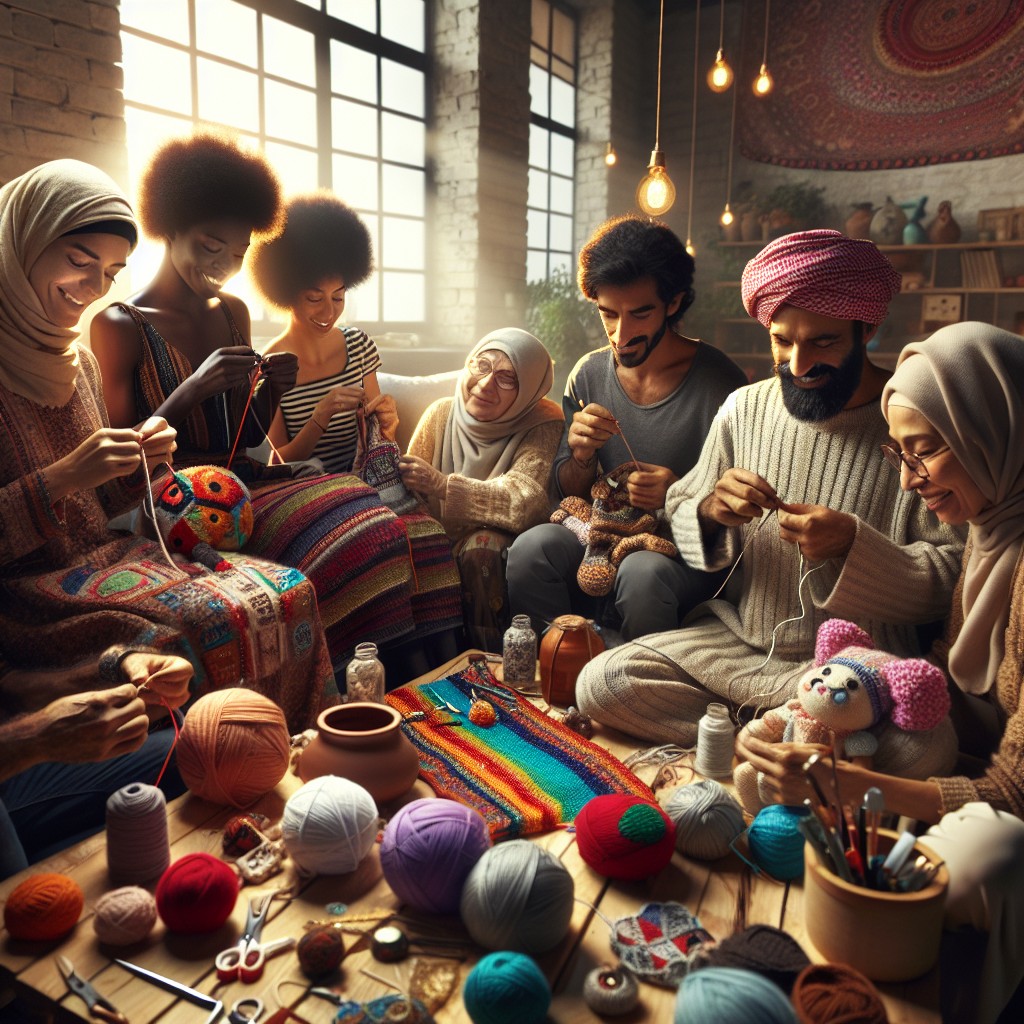
Supporting charitable causes through crafting not only benefits the recipients but can also bring a sense of purpose and community to your audience. Engage your readers by highlighting projects where handcrafted items can make a tangible difference.
- Knit or crochet blankets and beanies for newborns in hospitals or for the homeless.
- Create comfort dolls or teddy bears for children in crisis situations.
- Sew adaptive clothing or accessories for individuals with special needs.
- Assemble DIY craft kits for children’s hospitals or after-school programs.
- Organize craft supply drives for underfunded schools or community centers.
Encourage participation by providing patterns, organizing virtual crafting events, or collaborating with local charities to amplify their reach. Share stories and photos showcasing the impact of these projects, fostering a community spirit and inspiring continued support for these meaningful causes.
“Creating Craft Tutorial Videos for Your Blog”

Craft tutorial videos can significantly enhance the appeal and educational value of your blog. Here are some effective tips for creating engaging tutorials:
- Plan your tutorial: Before filming, outline the steps, prepare materials, and ensure you have a clear path for the craft process.
Lighting and clarity: Good lighting is crucial; it affects the visibility of the details in your craft. Ensure the area is well-lit and the camera focuses clearly on the craft.
Tools and materials: Introduce all necessary items at the beginning. Clearly state what is needed to follow along with the tutorial.
Camera angles and close-ups: Use different angles to provide viewers with an optimal perspective, especially for intricate details or complex steps.
Pacing: Keep a balance between a pace that allows followers to understand without dragging. Pausing after each step can be helpful for viewers.
Voiceover and captions: Not all your viewers can watch with sound, so consider adding captions. If your video has a voiceover, make sure your voice is clear, and the instructions are easy to understand.
Editing: Trim out any unnecessary parts and ensure smooth transitions between steps to keep the video concise and focused.
Engagement: Prompt users to ask questions or share their creations in the comments, which encourages interaction and community.
Creating craft tutorial videos can transform your craft blog into an interactive learning hub, fostering a community and allowing you to share your passion in a dynamic way.
“Setting Up an Etsy Shop: Additional Revenue for Craft Bloggers”
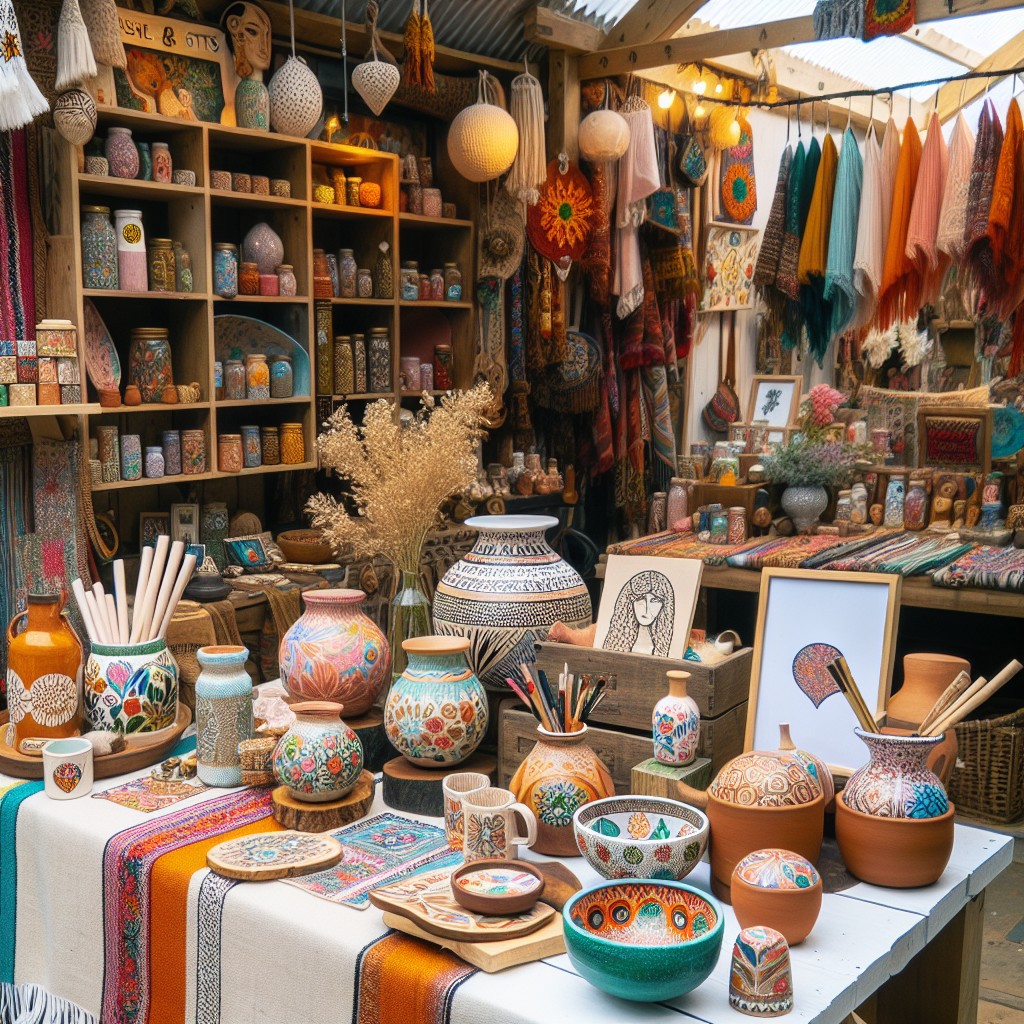
When diving into the world of Etsy, your craft blog becomes an instrumental tool for driving traffic to your handmade products. Here are several key points to effectively leverage an Etsy shop alongside your blog:
- Product Selection: Choose items to sell that are not only popular among your blog readers but also highlight your unique crafting skills. This reinforces brand consistency and boosts product appeal.
Branding: Develop cohesive branding that aligns with your blog. This includes your shop name, logo, product descriptions, and packaging. Strong branding creates a memorable customer experience.
Quality Photography: Invest time in taking high-resolution photos that showcase your items in the best light. Photos should be clear, well-lit, and styled to convey the aesthetic of your brand.
Customer Engagement: Use your blog to engage with your audience. Share behind-the-scenes content, upcoming product launches, and customer testimonials to build excitement and trust.
Promotions: Run special promotions exclusive to your blog readers. This can include discount codes or early access to new products, giving your loyal following a VIP treatment.
Integration: Make it easy for readers to navigate from your blog to your Etsy shop. Include visible links and calls-to-action in your blog posts that directly lead to your products.
Analytics: Utilize Etsy’s analytics tools to understand customer behaviour. Track which products are most popular among your blog audience and adjust your inventory accordingly.
By carefully blending the reach of your craft blog with the commercial platform of Etsy, you can create a symbiotic relationship that enhances exposure and sales potential.
“Exploring Worldwide Crafts: International Inspiration for Your Blog”

Travel the globe from the comfort of your craft room by delving into projects inspired by international artistry. Discover the intricate patterns of Indian mandalas, which can inspire a range of crafts from painting to embroidery.
Explore Japanese origami techniques to create paper art that is both delicate and disciplined. Take a virtual trip to Scandinavia and embrace the minimalist yet cozy aesthetic of hygge in your knitting or home decor projects.
Incorporate traditional African fabrics and beading into modern designs, blending cultures and patterns for unique outcomes. Learn about the rich history of Native American textile arts, and respectfully translate those visual narratives into your own quilt-making.
Experiment with the vibrant color palettes of Mexican folk art for lively and festive creations.
Each country and culture offers distinct materials, techniques, and symbolism that can expand your crafting repertoire and inject a fresh, global perspective into your blog content. By showcasing these diverse crafts, your blog can become a tapestry of international connections, engaging readers who appreciate global art forms and cultural education.
“Crafting As Therapy: Wellness and Craft Blogs”

Embarking on a crafting project can serve as a powerful mindfulness exercise, diverting focus from daily stresses and channeling it into the creative process. This immersive practice can quiet the mind, similarly to meditation, promoting a sense of calm and reducing anxiety.
In exploring the therapeutic benefits of crafting, it’s important to highlight the concept of flow. This mental state, characterized by complete absorption in an activity, can be achieved through crafting, leading to a release of dopamine, the feel-good neurotransmitter. It contributes to happiness and helps combat depression.
Moreover, the repetitive motions in activities such as knitting and crochet can have a soothing effect, offering a form of self-soothing akin to rhythmic breathing exercises. This can aid in managing emotions and providing a healthy coping mechanism.
Crafting also provides opportunities for positive social interactions through community workshops or online groups, which is valuable for mental health by reducing feelings of isolation and loneliness. The sense of accomplishment from completing a project can boost confidence and self-esteem, further contributing to emotional well-being.
Sharing the story of a craft’s role in wellness on a blog can inspire others to explore their own creativity as a form of self-care. It encourages an understanding that crafting isn’t just about the end product; it’s about the nurturing process and the personal growth that occurs along the way.
“Craft Book Reviews: Recommended Reads for Crafters”

Discovering new techniques and trends through the pages of craft literature can be just as rewarding as creating a project from scratch. Here are a few points to consider when diving into craft book reviews:
- Seek out books tailored to your skill level. Whether you’re a beginner or a seasoned crafter, there’s a plethora of titles designed for your expertise.
- Pay attention to the niches you’re interested in. Be it knitting, paper crafting, or woodworking, there’s a specialized book out there.
- Consider the author’s credibility and experience. A book penned by an acclaimed craftsperson can offer invaluable insights.
- Look for books with clear instructions and high-quality images. They provide better guidance for your projects.
- Assess the book’s innovation factor. Books that offer fresh ideas can stimulate your creativity and inspire unique creations.
- Don’t overlook books that compile various crafters’ work. They can serve as a collective pool of inspiration and introduce you to different styles.
Reading craft books with these points in mind will help enrich your crafting knowledge and potentially introduce you to new crafting horizons.
“Craft Storage Ideas: Organizing Your Work Area”

Effective storage solutions can revolutionize your crafting experience by keeping your workspace tidy and your materials within easy reach. Consider these strategies:
- Use clear, stackable bins to categorize supplies by type. This allows you to see contents at a glance and save space.
- Employ a pegboard with hooks for tools like scissors, tape measures, and pliers. It keeps them visible and accessible.
- Repurpose everyday items, such as mason jars or spice racks, to store small embellishments like beads or buttons.
- Invest in a rolling cart with shelves that can be wheeled away when not in use, providing flexible storage that adapts to your space.
- Label drawers and bins with either text or picture labels, especially if they are opaque, to easily identify the contents without needing to rummage.
- Consider vertical storage options like over-the-door organizers to make the most of limited spaces, perfect for holding fabric, ribbons, or wrapping paper.
By incorporating these storage hacks, your craft area can become a more efficient and pleasurable space, allowing creativity to flow without the hindrance of clutter and chaos.
“Unsung Craft Supplies: Overlooked Materials for Craft Projects”

When diving into the world of crafting, it’s easy to be dazzled by the array of specialty materials on the market. However, some of the most versatile crafting treasures are often found in everyday items that might be hiding in plain sight around your home. Let’s explore these lesser-known heroes that can elevate your next project.
Toilet Paper Rolls: Don’t toss them out! These cardboard cylinders offer a sturdy base for creating characters, organizing cords, or even making a chic pen holder with a touch of washi tape and creativity.
Old T-Shirts: Rather than throwing away your worn-out tees, cut them into strips to crochet or knit into rugs, baskets, or tote bags. Their soft, stretchy fabric offers comfort and durability.
Glass Jars: Empty jam or pasta sauce jars can be repurposed into elegant candle holders, vases, or on-the-go craft supply containers. Decorate with paint, ribbons, or decoupage for a personalized touch.
Cereal Boxes: The sturdy cardboard from these breakfast staples can be cut and covered with fabric or decorative paper to create custom organizers, picture frames, or even a set of personalized dividers for planners and journals.
Wine Corks: Collect these after your next dinner party and transform them into bulletin boards, coasters, or stylish plant markers for your herb garden.
Broken Jewelry: Salvage beads, chains, and charms from broken jewelry to enhance your scrapbooking projects, embellish clothing, or even string together for a unique art piece.
Using these unconventional supplies not only fosters creativity but also contributes to a sustainable crafting practice by repurposing what might otherwise be waste. Keep an open mind, and you’ll find potential in the most surprising places.
“Spotlight On Indie Craft Makers: Interview Series”

Highlighting the journeys and creations of indie craft makers can bring diverse and refreshing content to your craft blog. By initiating an interview series with these artisans, you offer readers an intimate look into the creative process and the personal stories behind handcrafted works.
- Identify unique crafters whose work aligns with your blog’s aesthetic and audience interests.
- Prepare thoughtful questions that delve into their techniques, inspiration, and challenges.
- Include high-quality images of their workspaces and products to visually engage your audience.
- Share their upcoming projects or events to provide timely and relevant content.
- Offer insights on emerging trends and tips gleaned from these craft professionals.
- Collaborate to host giveaways or tutorials, adding interactive elements to your blog.
By focusing on indie crafters, you not only enrich your content but also support the wider artisan community.
“Crafting On a Budget: Affordable Craft Projects”
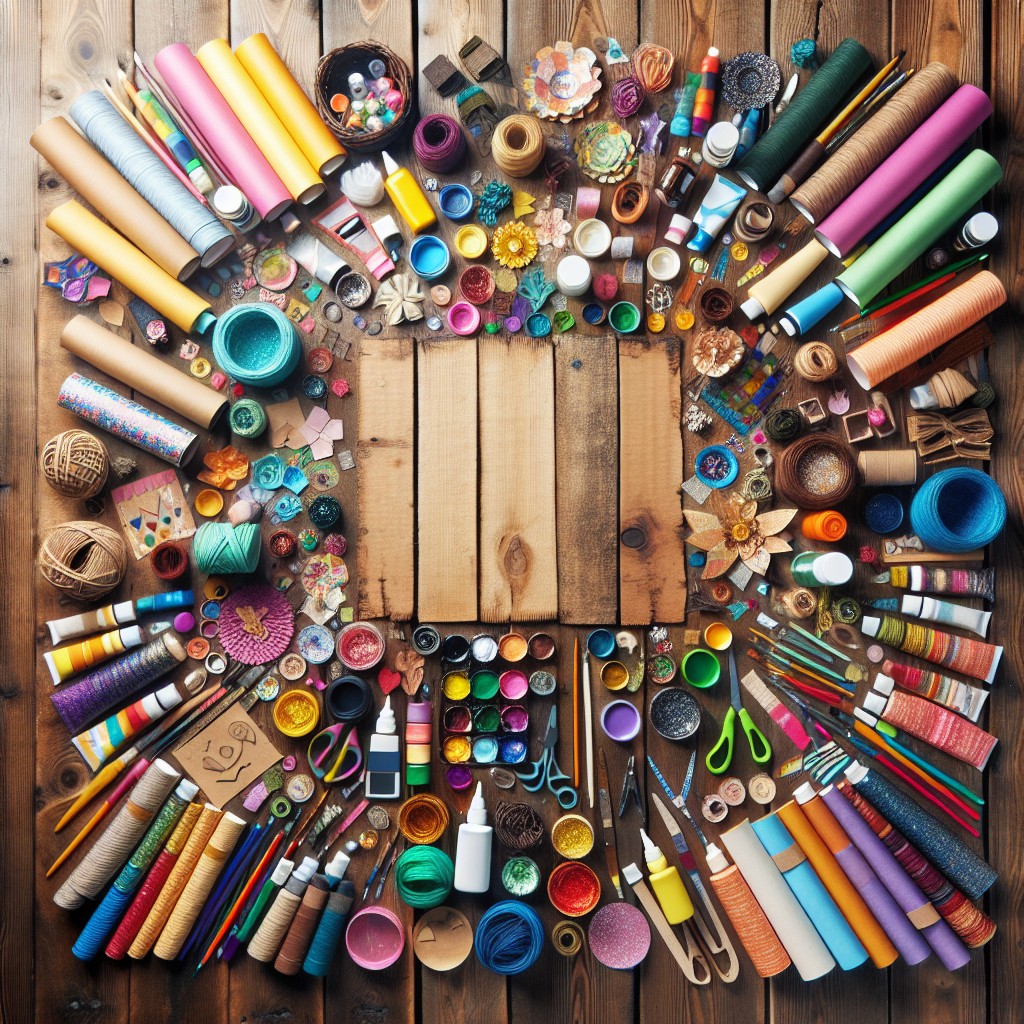
Budget-conscious crafting doesn’t have to mean skimping on creativity. Here are some points to keep in mind for economical projects:
- Repurpose Household Items: Look around your home for items you can transform. An old T-shirt can become yarn, a jar can turn into a vase, and scraps of paper can be the start of a collage.
- Shop Smart: Purchase supplies in bulk or on sale. Dollar stores and thrift shops are treasure troves for affordable materials.
- Swap with Friends: Host a craft material swap. It’s a fun way to exchange supplies you no longer need for something new-to-you.
- Natural Materials: Utilize nature’s bounty. Leaves, twigs, and stones can be excellent, no-cost additions to projects.
- Community Resources: Use libraries and community centers, which often offer free access to tools and space for crafting.
By employing these strategies, you can indulge in your crafting passion while keeping your finances in check.
“From Hobby to Business: Blogging About Your Craft Journey”

Transitioning from a craft hobbyist to a business owner is an exciting and rewarding journey. Blogging about this process can engage readers and document your progress. Here are key points to consider for this part of your blog:
- Document Milestones: Share the pivotal moments of your journey, such as making your first sale, receiving notable feedback, or reaching certain business goals.
- Be Transparent: Discuss the challenges and successes honestly. This transparency helps build trust with your audience, who may be inspired by your perseverance and learn from your experiences.
- Educate Your Readers: Provide insights into the business side of crafting, such as obtaining licenses, managing finances, and marketing your products.
- Show Behind-the-Scenes: Give a glimpse into your daily routine, workspace, and the creative process, which adds a personal touch that readers love.
- Guest Contributions: Feature stories from other crafters who have turned their hobbies into businesses, offering a range of perspectives and advice.
- Resource Lists: Compile lists of helpful resources that you’ve used, like suppliers, business tools, or online marketplaces.
By sharing these aspects of your journey, you guide and inspire others while establishing yourself as a knowledgeable figure in the craft business community.
Ideas Elsewhere
- https://www.bloggingherway.com/craft-blog-post-ideas/
- https://thehandmadebusiness.com/creative-blog-post-ideas/
- https://www.starterstory.com/diy-business-blog-post-ideas
- https://www.bloggingpro.com/craft-blogs/
- https://modpodgerocksblog.com/craft-blogs/
- https://www.runningwithagluegunstudio.com/2015/02/30-blog-post-ideas-for-diy-blogger.html




